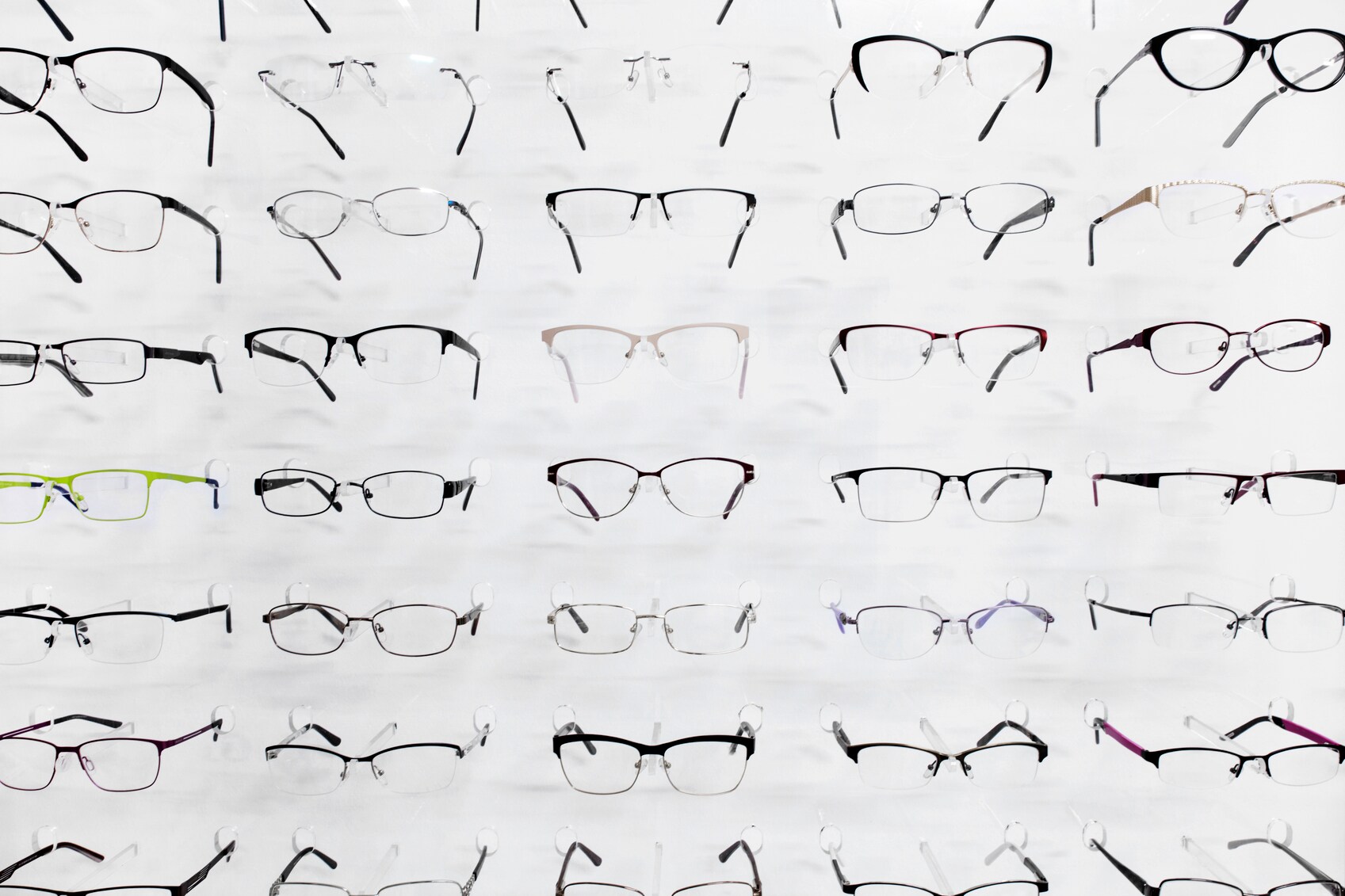 Eyeglass frames are available in metal and plastic, each material with its own strengths. The All About Vision website explains some of the advantages of the varieties of plastics used to make eyeglass frames:
Eyeglass frames are available in metal and plastic, each material with its own strengths. The All About Vision website explains some of the advantages of the varieties of plastics used to make eyeglass frames:
- Zyl (zylonite, or cellulose acetate) is a very cost-effective, creative, and lightweight option for eyewear. Laminated zyl frames are available in layered colors.
- Cellulose acetate propionate is a nylon-based, hypoallergenic plastic. It’s lightweight and has more transparency and gloss than other plastics.
- Blended nylon (polyamides, co-polyamides and gliamides) is a strong, lightweight, flexible material suitable for sports and performance frames.
- Plastic made of castor seed oil is now used in some eyewear.
Plastic is also becoming a popular material for eyeglass lenses. People choose plastic over glass because plastic lenses are thin, light, and less breakable than glass. TheVisionCouncil.org reviews some of the popular choices:
- Composite lenses are thin, durable lenses that incorporate polycarbonate, Trivex®, and other ophthalmic materials. They can be treated with scratch or glare-resistant coatings.
- Standard plastic lenses are much lighter than glass lenses and are widely prescribed for their comfort, durability, and impact resistance. They’re also popular for their affordability, safety, and myriad design options.
- Mid-index plastic lenses are slimmer and lighter than standard plastic types. A variety of protective treatments can be applied, including photochromic and no-glare coatings.
- High-index plastic lenses are slim and sleek, providing an alternative for strong prescriptions. When treated with a no-glare coating, high-index lenses sharpen sight considerably, especially at night.
- Polycarbonate lenses are thinner, lighter, and much more durable than standard plastic varieties. Virtually unbreakable, they’re a great choice for children and active adults.
The plastics and polymers used to make eyeglass frames and lenses should be analyzed for product quality assurance, quality control verification and, as needed, to carry out failure analysis. An FT-IR spectrometer, fitted with an Attenuated Total Reflectance (ATR) sampling accessory based on a single bounce diamond crystal, is an excellent instrument for analyzing many of the problems that may arise during the plastic lens or frame manufacturing process. The cosmetic prominence of eyeglasses makes any visual imperfection unacceptable.
- Bloom: Bloom refers to discolorations on polymers from phase separation of the material’s components. The most common cause is the incompatibility of certain additives with the polymer or other ingredients such as the migration of solid or liquid compounding materials which have a limited solubility in the polymer matrix. An effective way to test this type of sample is to scrape material from the visually mottled surface, then analyze using the ATR. This enables you to identify quickly the composition of the bloom. Samples from the good regions of the polymer can be compared to identify inhomogeneities in the surface or to verify the correct blending ratio.
- Brittleness, Cracking, Weakness: Oxidation, degradation or contamination can cause brittleness, cracks, and weakness. ATR can be used to identify many of these problems, through comparison of a failed part to a reference (good) component. This enables manufacturers to identify unexpected components and then change the formulation as needed.
- Environmental stress cracking (ESC): ESC is driven by environmental factors, such as the esters in soaps which act as solvents, slowly weakening plastics. This generates lines of weakness within the part, predisposing them to crack. Thermal Gravimetric Analysis coupled with FT-IR (using the TGA-IR module) has proven to be a powerful tool in this analysis. The TGA heats the sample, recording weight loss; the off-gassing components are then fed to a gas cell in the FT-IR where the gases can be identified. ESC causes a clean break while normal breakage results in highly irregular surfaces; TGA-IR of samples near the clean break can show signs of the culprit.
- Wear, Premature Failure: Incorrect formulations often lead to material failure, especially in extreme use conditions. ATR provides a look at the bulk material while TGA-IR can find even small differences in formulation, such as a missing plasticizer.
Now I hope you can now see why FTIR spectrometers are used so you can better see the world around you.
Editor’s Note: Need to understand the structure, know the properties, and then explore ways to process it until you have a material that performs the way you want? Visit our new Material Science Research center pages. You’ll find lots of educational resources for free use.
Plastic are better and more economical than traditional material. The major reason plastic are so much popular because it has very good chemical nature, high strength and easy to handle. Becuase of its multi nature. It is currently in almost every industry.
Thank you! Feel free to subscribe to our blog and read more about producing plastics and polymers. We published a new article every week.